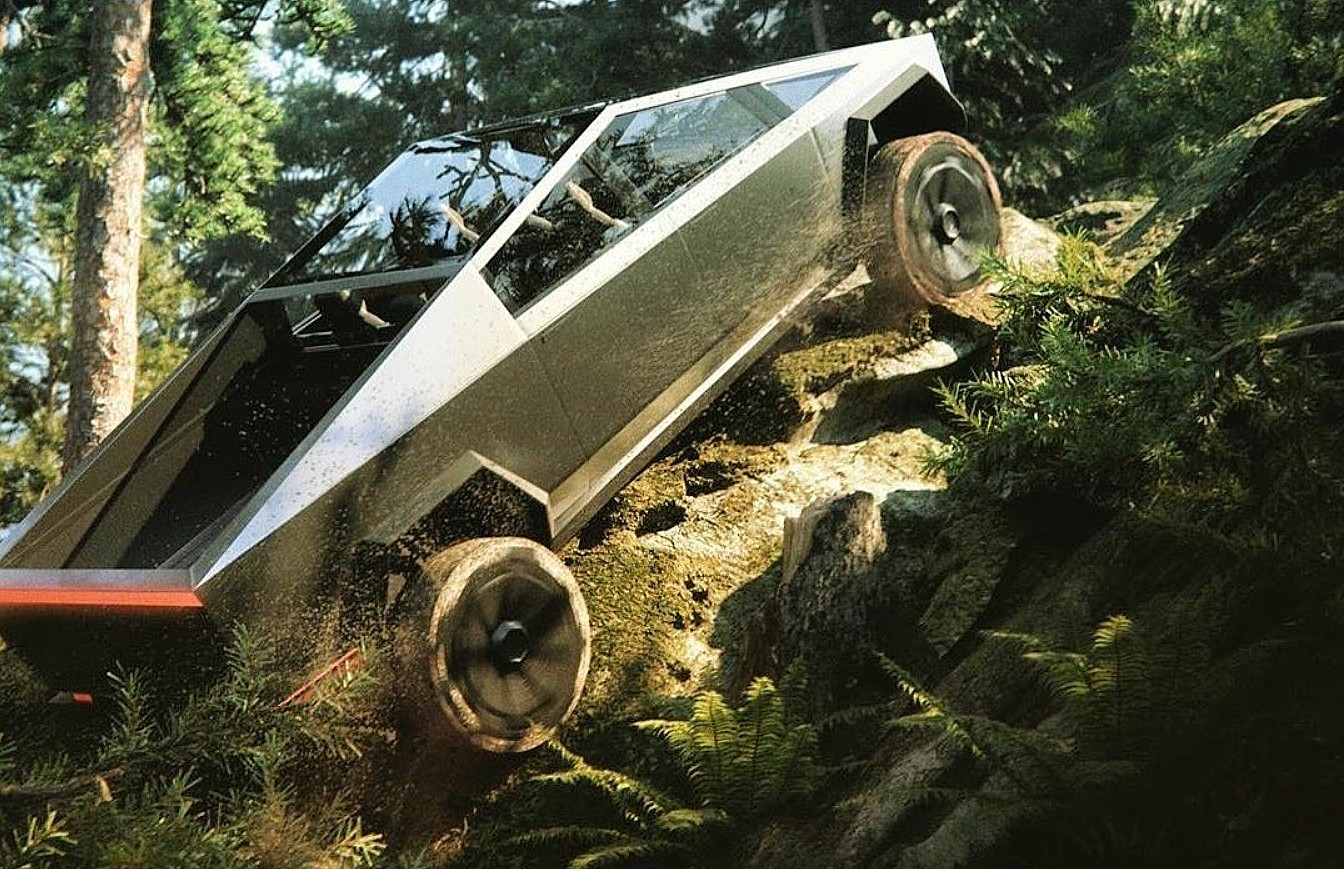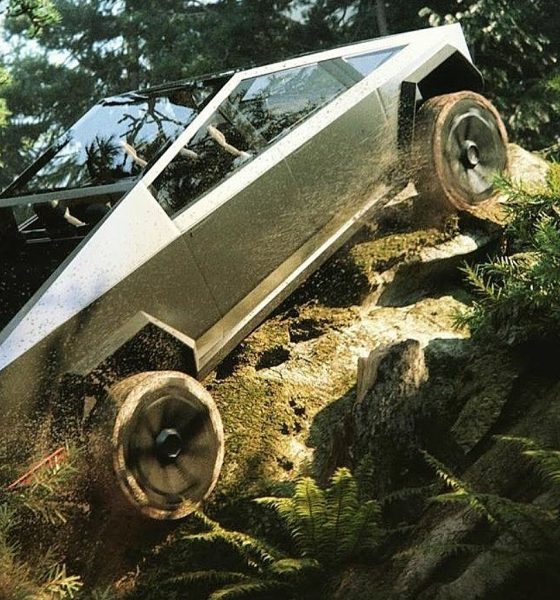

News
Morgan Stanley explains why Tesla’s first ‘Terafactory’ will be a perfect fit for Texas
Morgan Stanley analyst Adam Jonas believes that Tesla’s newest electric vehicle production facility will land in Texas. In an investor’s note on Monday, the analyst gave six key reasons for why he believes Texas will be Tesla’s newest home.
The upcoming facility is expected to be dedicated for the production of the Cybertruck, which will require a different manufacturing system compared to Tesla’s previous cars. The factory will be massive, and in the first quarter earnings call, Musk even mentioned that the Gigafactories will probably be referred to as “Terafactories” soon.
Following are Morgan Stanley’s reasons why Texas may very well be the site of the Cybertruck’s “Terafactory.”
Tesla’s need to join other manufacturers in states
Jonas recognizes that Tesla is the only Original Equipment Manufacturer (OEM) to have its main production facility in California. While Michigan has long been the home of the American automotive market, Tesla has called California home since its early days. Tesla is as much of a technology company as it is a carmaker, and technology lives in Silicon Valley.
However, Jonas sees unique disadvantages in having the main production facility located in CA. Concerning location and logistics, vehicle delivery times are extended for those who do not live in the western portion of the United States. Tesla owners who live on the East Coast are subjected to longer wait times for their vehicles due to transit and logistics delays. This is one of the main reasons a production facility that is centrally located in the country would be advantageous, Jonas says.
Texas has a hearty automotive manufacturing employment rate
Texas ranks fourth out of all fifty U.S. States in automotive manufacturing. This statistic comes from the US Department of Labor. Not only could Tesla increase its production rate as a company, but it could also provide a sizable economic boost by offering automotive production employment in a state that already has the enthusiasm for building vehicles.
Texas’ relaxed labor union representation fits Tesla’s bill
Jonas believes Tesla would prefer to operate in a state with a labor union representation that is not as heavy. Texas is a right-to-work state, where labor costs are affordable. Considering that the facility will be responsible for producing Tesla’s first pickup, the Cybertruck, along with the Model Y crossover, the workload will require a hefty workforce. Tesla will likely be looking to save where it can in a state that won’t break the company’s budget, and in Texas, The cost of doing business is significantly less than California, Jonas said.
Texas is a hotspot for renewable energy
Jonas recognizes Tesla’s identification as an “integrated renewable energy generation, storage, and transportation company.” Tesla would likely prefer a state with an abundance of renewable solar energy that could sustainably drive its manufacturing operations. Texas is a state with a warm and sunny climate, making it perfect for solar energy. The Morgan Stanley analyst noted that the state’s predictable climate and weather outlook would be beneficial to Tesla.
Elon Musk’s SpaceX holds its operations in Boca Chica, Texas
SpaceX has held its operations in Boca Chica, Texas since 2012. While its main rocket facility is in Hawthorne, California, Boca Chica is where SpaceX chooses to launch some of its rockets. The site first launched a rocket on April 5, 2019. However, Jonas seems to believe that Musk’s comfortability with Texas and SpaceX could extend to Tesla. “Synergies in management time and, over time, possibly increased cooperation between Tesla and SpaceX make Texas an appealing option for the next U.S. Giga,” Jonas wrote.
Tesla’s presence in the heart of U.S. Oil and Gas is “symbolic”
Jonas and other Morgan Stanley investors said that U.S. lawmakers and the public might see a “symbolic and, in many ways, well-timed” investment by Tesla in Texas. The state has long been the heart of the United States’ oil and natural gas industry, and a sustainable energy company moving into Texas could be a hint toward the inevitable transition to clean energy.
While Tesla CEO Elon Musk has mentioned that the newest production facility is going to end up in the Central United States, there has been confirmation that Texas is indeed the definite the landing spot for the upcoming facility. However, Musk did use a Twitter poll to test the waters of Texas’ acceptance as the location of the newest factory, and the results were positive.
Both Musk and CFO Zachary Kirkhorn mentioned that the new production facility could be the company’s largest plant yet, hinting that it might be called a “Terafactory” instead. There is no indication of when Tesla will announce the facility’s final location. Still, Texas certainly seems like a very good fit for the Cybertruck facility.

News
Tesla FSD fleet is nearing 7 billion total miles, including 2.5 billion city miles
As can be seen on Tesla’s official FSD webpage, vehicles equipped with the system have now navigated over 6.99 billion miles.

Tesla’s Full Self-Driving (Supervised) fleet is closing in on almost 7 billion total miles driven, as per data posted by the company on its official FSD webpage.
These figures hint at the massive scale of data fueling Tesla’s rapid FSD improvements, which have been quite notable as of late.
FSD mileage milestones
As can be seen on Tesla’s official FSD webpage, vehicles equipped with the system have now navigated over 6.99 billion miles. Tesla owner and avid FSD tester Whole Mars Catalog also shared a screenshot indicating that from the nearly 7 billion miles traveled by the FSD fleet, more than 2.5 billion miles were driven inside cities.
City miles are particularly valuable for complex urban scenarios like unprotected turns, pedestrian interactions, and traffic lights. This is also the difference-maker for FSD, as only complex solutions, such as Waymo’s self-driving taxis, operate similarly on inner-city streets. And even then, incidents such as the San Francisco blackouts have proven challenging for sensor-rich vehicles like Waymos.
Tesla’s data edge
Tesla has a number of advantages in the autonomous vehicle sector, one of which is the size of its fleet and the number of vehicles training FSD on real-world roads. Tesla’s nearly 7 billion FSD miles then allow the company to roll out updates that make its vehicles behave like they are being driven by experienced drivers, even if they are operating on their own.
So notable are Tesla’s improvements to FSD that NVIDIA Director of Robotics Jim Fan, after experiencing FSD v14, noted that the system is the first AI that passes what he described as a “Physical Turing Test.”
“Despite knowing exactly how robot learning works, I still find it magical watching the steering wheel turn by itself. First it feels surreal, next it becomes routine. Then, like the smartphone, taking it away actively hurts. This is how humanity gets rewired and glued to god-like technologies,” Fan wrote in a post on X.
News
Tesla starts showing how FSD will change lives in Europe
Local officials tested the system on narrow country roads and were impressed by FSD’s smooth, human-like driving, with some calling the service a game-changer for everyday life in areas that are far from urban centers.

Tesla has launched Europe’s first public shuttle service using Full Self-Driving (Supervised) in the rural Eifelkreis Bitburg-Prüm region of Germany, demonstrating how the technology can restore independence and mobility for people who struggle with limited transport options.
Local officials tested the system on narrow country roads and were impressed by FSD’s smooth, human-like driving, with some calling the service a game-changer for everyday life in areas that are far from urban centers.
Officials see real impact on rural residents
Arzfeld Mayor Johannes Kuhl and District Administrator Andreas Kruppert personally tested the Tesla shuttle service. This allowed them to see just how well FSD navigated winding lanes and rural roads confidently. Kruppert said, “Autonomous driving sounds like science fiction to many, but we simply see here that it works totally well in rural regions too.” Kuhl, for his part, also noted that FSD “feels like a very experienced driver.”
The pilot complements the area’s “Citizen Bus” program, which provides on-demand rides for elderly residents who can no longer drive themselves. Tesla Europe shared a video of a demonstration of the service, highlighting how FSD gives people their freedom back, even in places where public transport is not as prevalent.
What the Ministry for Economic Affairs and Transport says
Rhineland-Palatinate’s Minister Daniela Schmitt supported the project, praising the collaboration that made this “first of its kind in Europe” possible. As per the ministry, the rural rollout for the service shows FSD’s potential beyond major cities, and it delivers tangible benefits like grocery runs, doctor visits, and social connections for isolated residents.
“Reliable and flexible mobility is especially vital in rural areas. With the launch of a shuttle service using self-driving vehicles (FSD supervised) by Tesla in the Eifelkreis Bitburg-Prüm, an innovative pilot project is now getting underway that complements local community bus services. It is the first project of its kind in Europe.
“The result is a real gain for rural mobility: greater accessibility, more flexibility and tangible benefits for everyday life. A strong signal for innovation, cooperation and future-oriented mobility beyond urban centers,” the ministry wrote in a LinkedIn post.
News
Tesla China quietly posts Robotaxi-related job listing
Tesla China is currently seeking a Low Voltage Electrical Engineer to work on circuit board design for the company’s autonomous vehicles.

Tesla has posted a new job listing in Shanghai explicitly tied to its Robotaxi program, fueling speculation that the company is preparing to launch its dedicated autonomous ride-hailing service in China.
As noted in the listing, Tesla China is currently seeking a Low Voltage Electrical Engineer to work on circuit board design for the company’s autonomous vehicles.
Robotaxi-specific role
The listing, which was shared on social media platform X by industry watcher @tslaming, suggested that Tesla China is looking to fill the role urgently. The job listing itself specifically mentions that the person hired for the role will be working on the Low Voltage Hardware team, which would design the circuit boards that would serve as the nervous system of the Robotaxi.
Key tasks for the role, as indicated in the job listing, include collaboration with PCB layout, firmware, mechanical, program management, and validation teams, among other responsibilities. The role is based in Shanghai.
China Robotaxi launch
China represents a massive potential market for robotaxis, with its dense urban centers and supportive policies in select cities. Tesla has limited permission to roll out FSD in the country, though despite this, its vehicles have been hailed as among the best in the market when it comes to autonomous features. So far, at least, it appears that China supports Tesla’s FSD and Robotaxi rollout.
This was hinted at in November, when Tesla brought the Cybercab to the 8th China International Import Expo (CIIE) in Shanghai, marking the first time that the autonomous two-seater was brought to the Asia-Pacific region. The vehicle, despite not having a release date in China, received a significant amount of interest among the event’s attendees.








